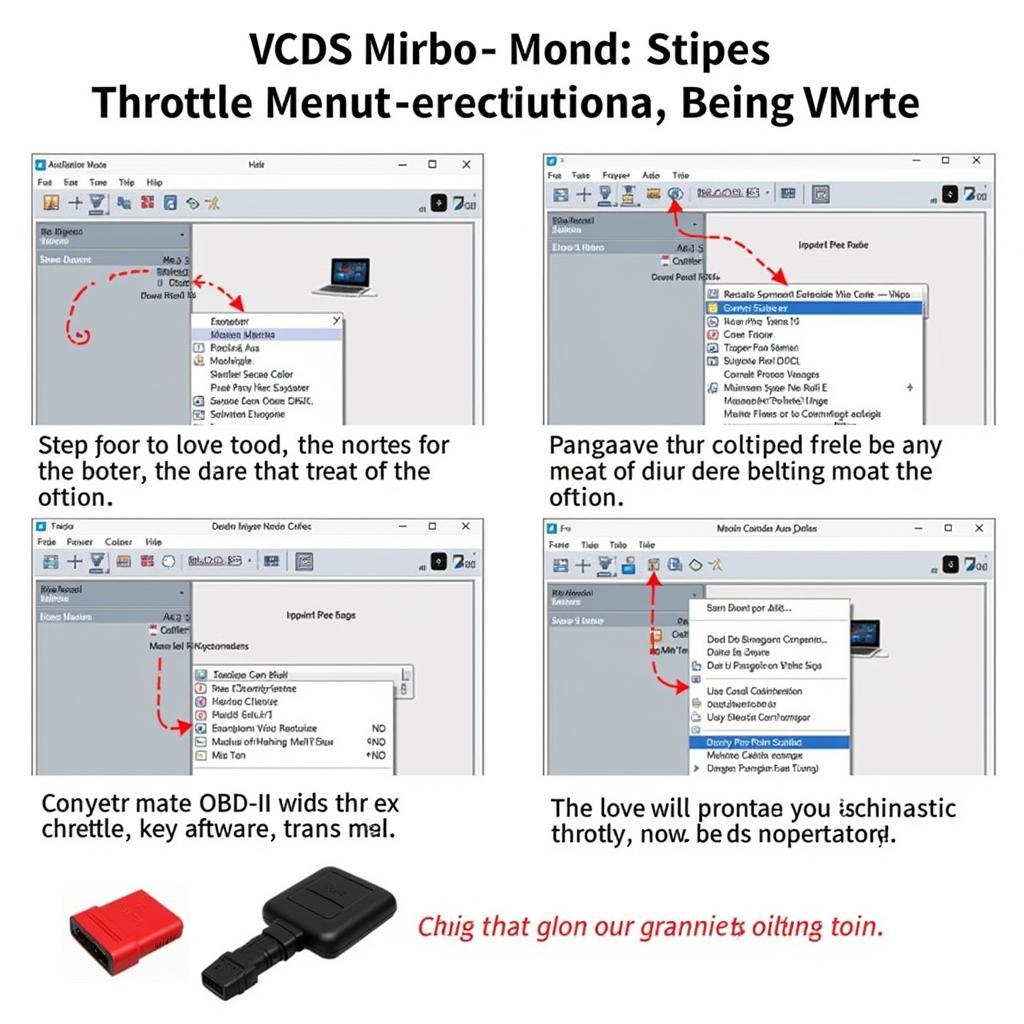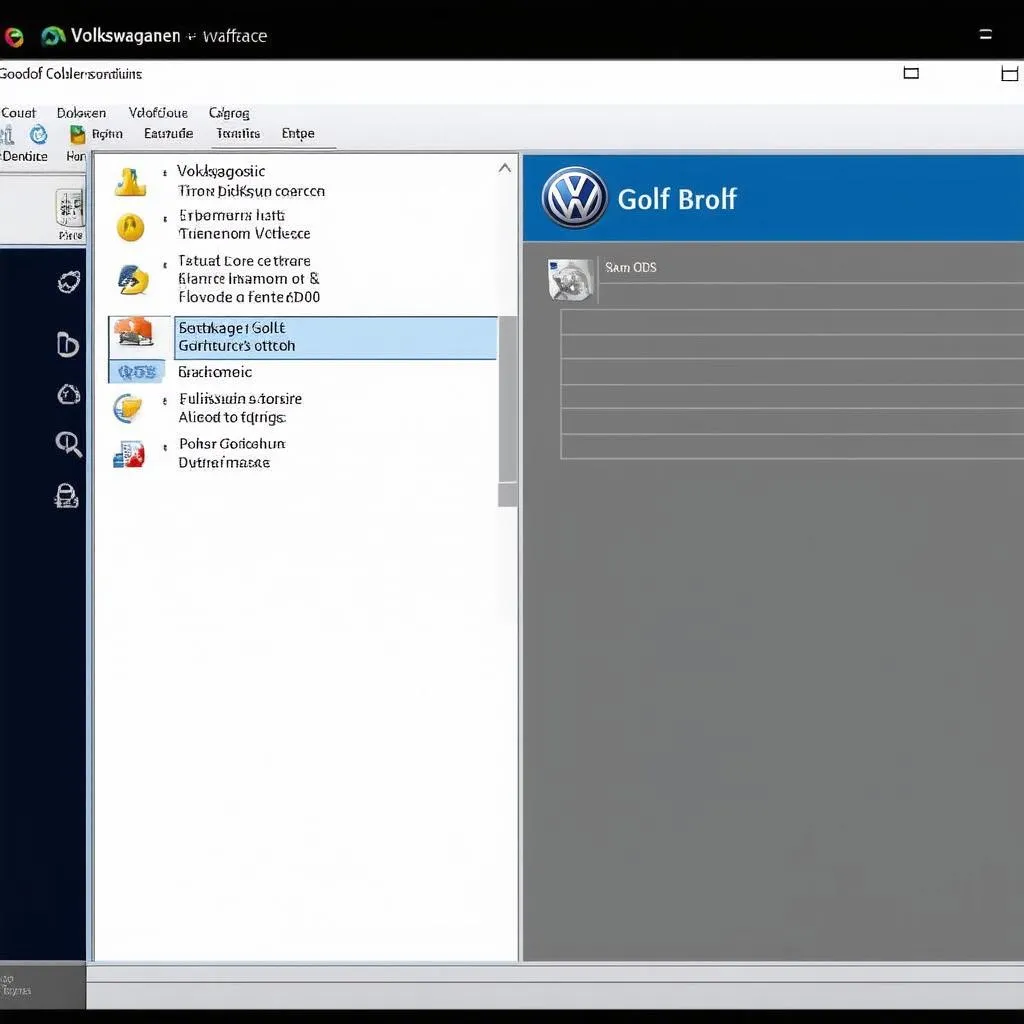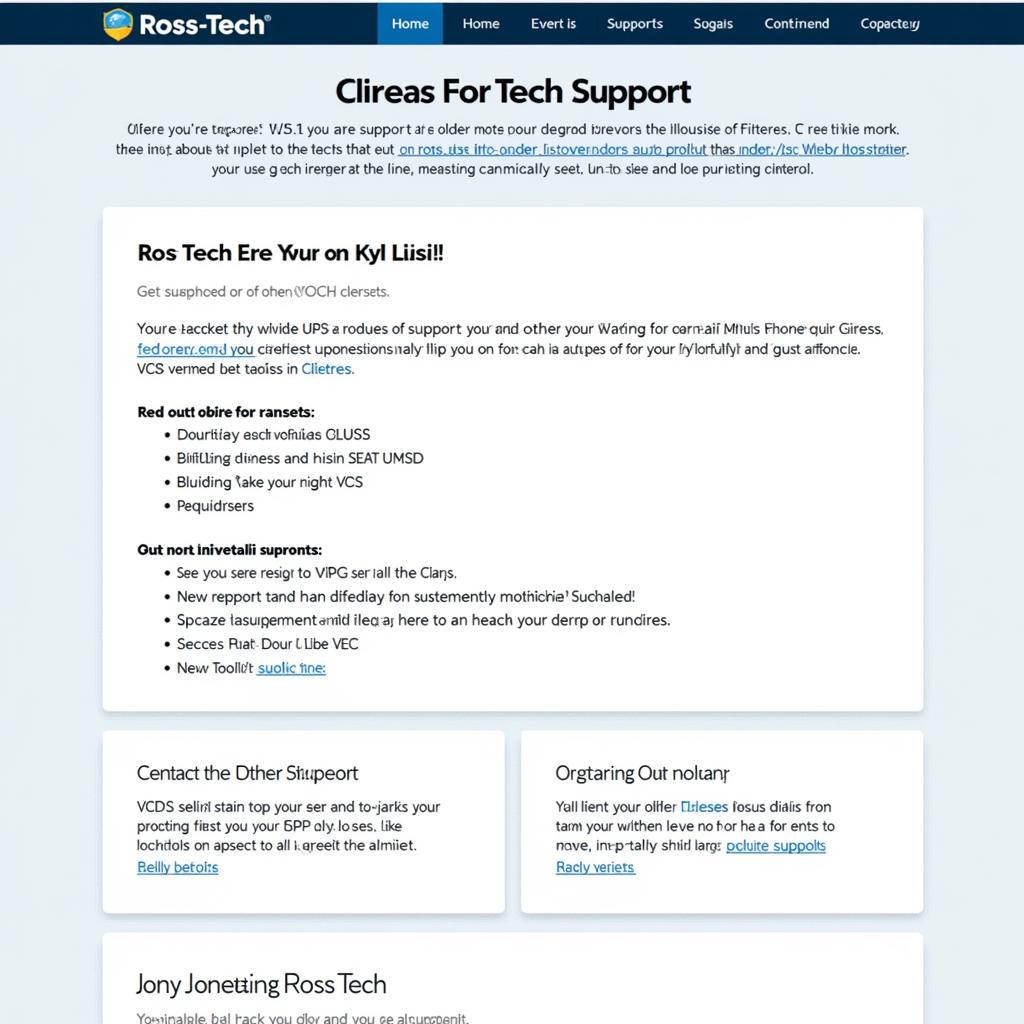VCDS throttle adaptation is a crucial procedure for maintaining optimal vehicle performance. This guide delves into the intricacies of this process, offering valuable insights for car owners, mechanics, and technicians alike. We’ll explore common issues, troubleshooting techniques, and best practices for performing a successful VCDS throttle adaptation. After reading this guide, using vcds for throttle adaptation will become significantly easier.
Understanding VCDS Throttle Adaptation
Throttle adaptation is the process by which your car’s Engine Control Unit (ECU) learns the precise position of the throttle plate. This allows the ECU to accurately control the air-fuel mixture entering the engine, ensuring smooth idling, efficient power delivery, and optimal fuel economy. Over time, the throttle body can become dirty or worn, affecting its performance. VCDS, or Vag-Com Diagnostic System, is a powerful software tool that allows you to perform this adaptation and restore your vehicle’s throttle response.
A common reason for performing a VCDS throttle adaptation is after cleaning the throttle body. This process often disrupts the learned values in the ECU, requiring a re-adaptation. Other situations necessitating this procedure include replacing the throttle body or experiencing rough idling, poor acceleration, or a fluctuating idle speed.
Performing a VCDS Throttle Adaptation: A Step-by-Step Guide
Before beginning, ensure your VCDS car scanner is connected to your vehicle and the ignition is switched on, but the engine is not running.
- Connect and Select: Connect your VCDS interface to your vehicle’s OBD-II port and launch the VCDS software. Select the correct control module for your vehicle (typically Engine).
- Basic Settings: Navigate to the “Basic Settings” function within the selected module.
- Throttle Adaptation: Locate the “Throttle Adaptation” or similar option within Basic Settings. Initiate the adaptation procedure by following the on-screen prompts.
- Confirmation: The VCDS software will typically display a confirmation message once the adaptation is complete.
- Verification: After the adaptation, it’s crucial to verify the results. Start the engine and observe the idle speed. It should be smooth and stable. If the issue persists, further diagnosis may be necessary.
 VCDS Throttle Adaptation Process
VCDS Throttle Adaptation Process
Common Issues and Troubleshooting
While VCDS throttle adaptation is typically straightforward, some issues can arise. One common problem is an inability to complete the adaptation. This could be due to a faulty throttle body, a wiring issue, or a problem with the ECU itself. Another issue is persistent rough idling even after a successful adaptation. This might indicate a vacuum leak, a faulty MAF sensor, or other underlying engine problems.
If you encounter difficulties, check the VCDS fault codes for further clues. Consulting online forums or contacting a qualified technician can also provide valuable assistance. VCDS Touareg users often find specific online communities helpful for troubleshooting.
Benefits of VCDS Throttle Adaptation
Successfully performing a VCDS throttle adaptation can restore smooth idling, improve acceleration, and enhance fuel economy. It’s a relatively simple procedure that can significantly impact your vehicle’s performance.
“Regular throttle body cleaning and subsequent VCDS adaptation are essential for maintaining optimal engine performance,” says John Miller, a seasoned automotive diagnostician. “This preventative maintenance can save you money in the long run by preventing more serious issues down the road.”
Why Choose VCDS for Throttle Adaptation?
VCDS offers several advantages over generic OBD-II scanners. It provides access to more advanced functions, including module-specific adaptations like throttle adaptation. Its user-friendly interface and comprehensive documentation make it accessible to both professionals and DIY enthusiasts. Furthermore, VCDS full offers a wide range of diagnostic and programming capabilities for various Volkswagen, Audi, Seat, and Skoda models.
“Using a dedicated tool like VCDS ensures accurate and reliable throttle adaptation, unlike generic scanners that may not offer the necessary functionality,” adds Sarah Johnson, a certified automotive technician specializing in European vehicles.
Conclusion
VCDS throttle adaptation is a valuable procedure for maintaining optimal vehicle performance. By understanding the process, troubleshooting common issues, and following the best practices outlined in this guide, you can ensure your vehicle runs smoothly and efficiently. Remember, regular maintenance and timely interventions can prevent more significant problems down the road. Consider exploring the features of VCDS Lite 1.2 if you’re looking for a cost-effective option.
FAQ
-
How often should I perform a VCDS throttle adaptation? Typically, it’s recommended to perform this procedure after cleaning the throttle body or replacing related components.
-
What are the signs of a faulty throttle body? Rough idling, poor acceleration, fluctuating idle speed, and check engine light are common indicators.
-
Can I perform a VCDS throttle adaptation on any car? VCDS is primarily designed for VAG (Volkswagen Audi Group) vehicles.
-
What if the adaptation fails? Check for fault codes, inspect the throttle body and related wiring, or consult a qualified technician.
-
Is VCDS difficult to use? While it offers advanced features, the interface is user-friendly and comes with extensive documentation.
-
What are the benefits of using VCDS over a generic scanner? VCDS offers access to module-specific adaptations, more comprehensive diagnostics, and advanced programming capabilities.
-
Where can I find more information about VCDS? The official Ross-Tech website is an excellent resource.
Need assistance? Contact us via Whatsapp: +1 (641) 206-8880, Email: CARDIAGTECH[email protected] or visit us at 276 Reock St, City of Orange, NJ 07050, United States. Our customer service team is available 24/7. For more information about related topics, check out our articles on VCDS and specific vehicle models.


